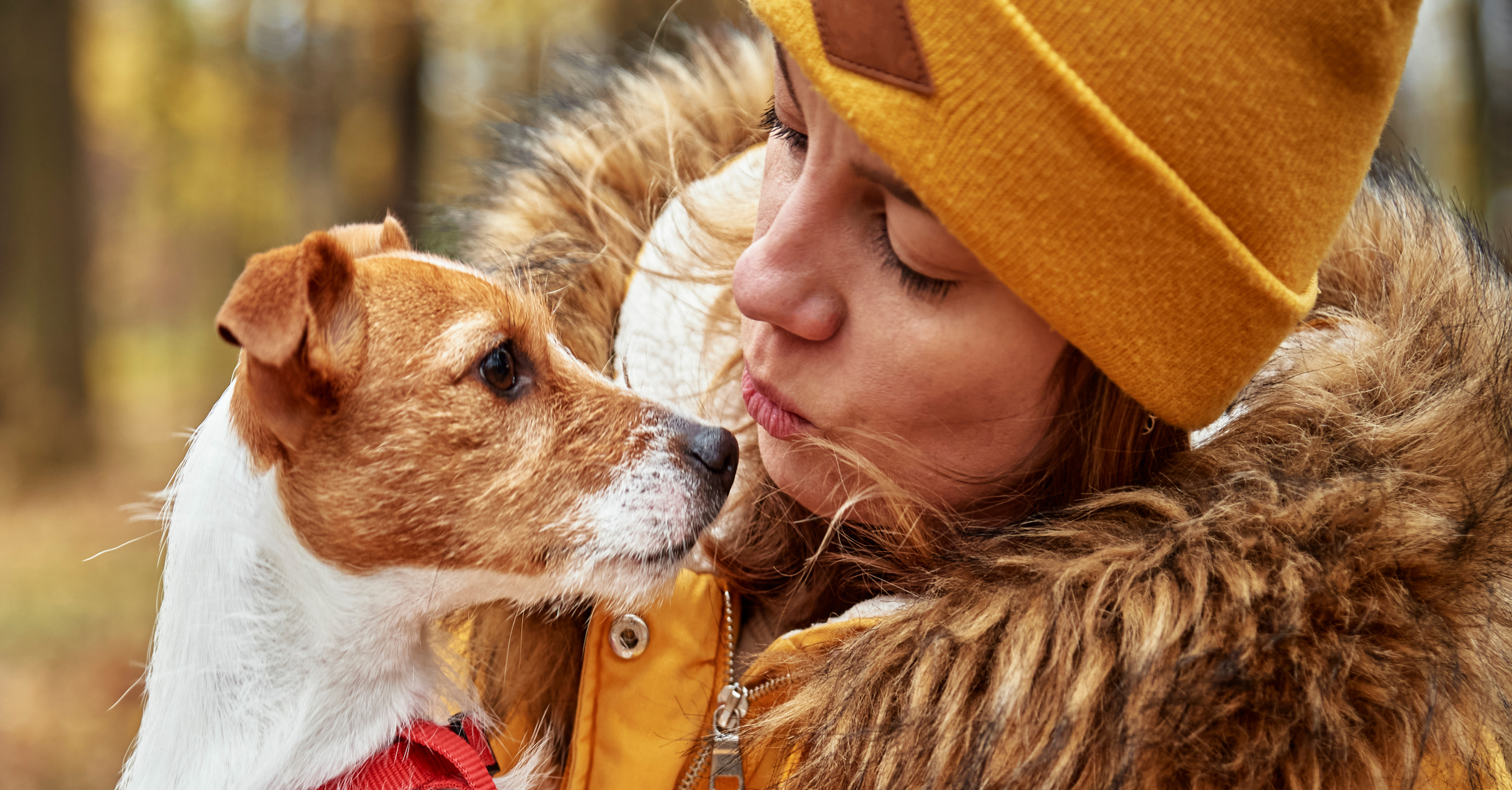If social distancing has been giving you cabin fever, you might be looking for safe ways to get out of the house. Going for a hike, or even a camping trip, can be a great way to get active outdoors, while keeping yourself safe. And, since your dog has probably gotten used to having you around all day, it’s only right to bring them along for the adventure!
Hiking and camping with a dog can be lots of fun, and a great bonding experience between an animal and their human. Before suiting the two of you up, though, it’s important to know exactly how to keep your furry friend safe when doing a trail.
Planning ahead and being prepared is extremely important when doing a trail with your dog, especially in more challenging trails, or unfamiliar terrain. However, beyond preparation for the basic necessities, there are some questions you need to ask yourself about your dog to ensure they’re up to the task.
Can my dog go hiking?
Something that’s important to recognize is that not all dogs are able to hike or walk more challenging trails. Understanding the condition and ability of your dog, and being realistic about their capability, will go a long way in keeping them safe. Some questions to ask yourself before taking your dog hiking:
- Does your dog have any known health issues? This is one of the first questions to ask. If you want to go hiking with your furry friend, it’s important that they don’t have any existing health conditions. They also will need to be able to withstand temperature changes.
- Is your dog very old or young? They may lack the strength and stamina to keep up for the whole hike. Additionally, their immune systems may make them more vulnerable in nature.
- How will your dog behave on the trail? Some dogs can become very erratic or excited in nature, and may disobey commands. This is especially true for scent hounds, or any dog with a high prey drive. It might be possible to train your dog out of these habits, but there’s still always the risk of them tearing off into the brush after an especially enticing squirrel.
- Has a vet recently cleared your dog for hiking? In addition to giving a check up on your dog’s general health, a vet can tell you about other ways to prepare for a hike. There are a number of preventative measures you can take to keep your pet safe, depending on the length, remoteness, and duration of your next hike. There are preemptive treatments available for pathogens your dog may pick up from drinking water, as well as for parasites, such as ticks. Your vet will be able to tell you which ones will be most suitable, depending on your destination.
- Genetically speaking, is your dog a good hiker? Short-muzzled dogs, otherwise known as brachycephalic dogs, are generally not the greatest hikers. Although they may be all over a shorter walk, pugs, most bulldog breeds, and boxers should be left at home for more challenging trails. These breeds are particularly prone to heat stroke and fatigue, so use caution when bringing them along.
Finding a dog-friendly trail
Are there dog-friendly trails in your area? Although it’s important to ensure that hikes are ‘dog-friendly,’ in that your pet is allowed there, you should also consider if the terrain will be suitable for your dog. Here a few things to consider when choosing your next hike:
- Is the terrain suitable for a dog’s feet? While there are steps you can take to protect your dog’s feet (more on that later), it’s best to just pick a trail with terrain that won’t be treacherous or painful for your dog. Avoid trails that are jagged or icy, or surfaces that will become excessively hot in the sun.
- What will the temperatures be like? Although most dogs can withstand colder temperatures than us, they don’t usually do so well in extreme heat. If you’re looking at a more extended hike (especially a multi-day trip), try to either go at a cooler time of year, or pick a route with more shade.
- What are the trail rules for dogs? While some trails allow well-behaved dogs to roam freely, others require them to stay leashed at all times, and some others don’t allow dogs at all. It’s important to do your research ahead of time, so you’re not surprised by upset hikers, or worse, a hefty fine.
For even more suggestions on where to walk, be sure to check out our previous blog post on dog-friendly trails and parks! There are also even more tips on camping with your dog and even tips on keeping your pooch’s toes safe on sidewalks for you to check out!
Preparing your dog for a trail
You’ve gone over the checklist, and your dog is shaping up to be a great hiking buddy. However, there’s still work to do in order to keep you and your pet safe on the trails. Here are some of the best ways to prepare your dog for longer trails:
1. Work your way up!
Properly preparing your dog for a hike is extremely important, no matter what level of challenge you’re expecting to face. One of the best ways to get your dog ready, especially for a more difficult hike, is to simply work your way up to it. Before taking your pal on a week-long backcountry excursion, start with a shorter, local trail. This is a good way to help with your dog’s general fitness, and it’ll also toughen up their paws for next time.
Not only will working your way up prepare your dog physically, it’ll help them adjust mentally to longer trails. Like humans, dogs need to learn their capabilities, and it’s a good idea to give them a chance to figure out how to manage their stamina while the stakes are still low.
You can also learn some valuable information by doing these trial trails. How does your dog react to wildlife, other hikers, or other dogs when hiking? How do they behave when they’re tired and need a break? These, and other logistical questions, can often be answered by doing a few preparatory trails before the main event.
2. Learn trail etiquette, and teach it to your dog
If you’re bringing your dog on a hike, it’s important they don’t pose a nuisance, or a hazard, to those you’ll be sharing the trail with. If the route requires leashes, or if your dog might jump up at others, make sure to use a short lead. We recommend six feet or less, to minimize issues with tangling. If your dog is trained and unleashed, make sure they’re always within your sight, and that they can hear you.
Additionally, make sure you’re as courteous to other hikers as you can be. Keep your dog out of other people’s way, and teach them to heel at your command. Be sure to let other dog-owners know if yours is friendly, and find out ahead of time if the animals should be kept separate. This is important to do anywhere you bring your dog, but is especially important on trails, where medical help can be much further away.
3. Come prepared!
You’ll need to come prepared with some supplies to ensure the safety and comfort of you and your dog when tackling a trail. Always be sure to pack lots of food and water, as well as any medication your dog may need. Be sure you’re stocked up on dog poop bags, or if you’re staying overnight, bring a shovel to bury the business (at least eight inches deep and 200 feet from any water source, trail, or campsite).
4. Protect the environment
While the great outdoors can be an amazing, exciting experience for a dog, it’s important to keep control of them. This is not just for their safety, but also to protect the environment around you. Areas of dense brush, as well as waterways, can sometimes be sensitive, and may be harmed or destroyed by rambunctious dogs. Not to mention, some plants are poisonous, and some animals bite back, so it’s best to err on the side of caution.
As a side note, make sure you leave no trace when taking your dog on the trails. Nobody likes to see a bag of dog poop carelessly flung off the trail, so if you packed it in, be sure to pack it out.
Looking after your dog on the trail
Once you’re out there, you want to keep an eye on your dog, and stay aware of their condition. Be aware of hydration status of your dog. When dogs pant as a means to cool down, they also lose a lot of moisture during the process. If you’ve been walking for fifteen minutes, and your mouth is getting a bit dry, consider how your fur-covered friend feels! Likewise, just as you probably eat more when doing an extended hike, you should pack more food for your dog than they’d normally eat. Here’s a full list of the essentials to bring to safely do a trail with your dog:
- Water and a collapsible bowl
- Look up recommendations based on your dog’s breed for how much to bring, but it’s always better to have too much than not enough.
- Dry food
- A dry food that’s high in protein and fat will be the best way to keep their energy levels up, and the weight down. Plan to pack about fifty percent more than their normal portion.
- First aid kit
- This should include bandages, gauze, antiseptic (make sure it’s pet friendly), a liquid bandage for paw pads, topical antibiotics, tweezers or pliers, styptic pencils, and some kind of antihistamine in case of bee stings or snake bites.
- Poop bags/shovel
- A dog collar with their name, license number, your contact information, etc.
- Heat stroke prevention
- This can be ice or cold packs, or simply a bandanna that can be wet and placed on the dog’s neck or thigh to keep them cool.
- Short leash
- Doggy backpack
- These can be found online, or in some pet supplies stores. Make sure it’s an appropriate size for your breed, and that it’s packed evenly.
- A paw salve
- Most important on longer hikes, this can be a good way to take care of your dog’s paw pads in case of cracks or splits.
Keeping your dog in top shape
Hiking with your dog is a great way for the two of you to get out of the house, get active, and enjoy the natural beauty of the great outdoors. Although there’s lot of preparation that goes into it, the reward of experiencing trails, hiking, and camping with a dog is something special, and more than worth the hassle.
If you have more questions about keeping your dog safe on a trail, want to get them evaluated for hiking, or anything else related to keeping your furry friend in top shape, don’t hesitate to contact the experts at Hastings Veterinary Hospital today!
Creative Commons Attribution: Permission is granted to repost this article in its entirety with credit to Hastings Veterinary Hospital and a clickable link back to this page.






